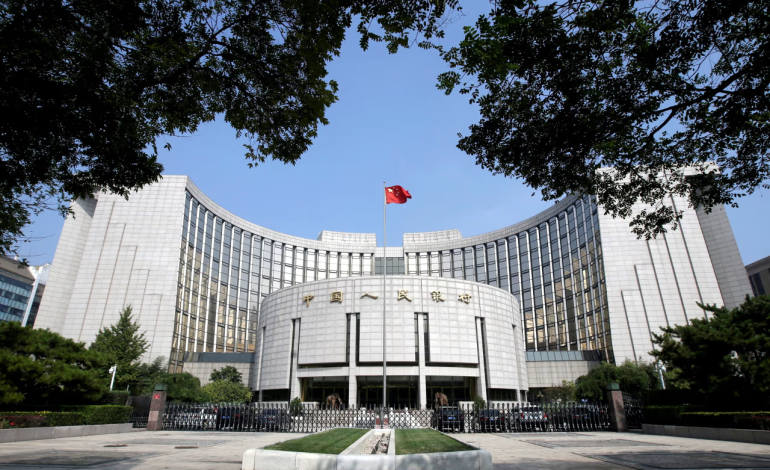The People’s Bank of China (PBOC) maintained its benchmark lending rates on Monday, signaling a cautious approach to monetary policy amid robust first-quarter economic performance and ongoing trade tensions with the United States.
The central bank kept the one-year loan prime rate (LPR) at 3.1% and the five-year LPR at 3.6%, in line with market expectations. These rates, which have remained unchanged since October 2023, influence a wide range of lending — with the one-year LPR impacting most household and business loans and the five-year LPR serving as a benchmark for mortgage lending.
The rate decision follows China’s release of better-than-expected economic data, including a 5.4% year-over-year GDP growth in the first quarter. Retail sales and industrial production figures for March also exceeded forecasts, reducing the immediate pressure on the central bank to ease monetary conditions.
Economists viewed the decision as a sign that policymakers are prioritizing currency stability in the face of rising external pressures, particularly from newly imposed US tariffs. The yuan strengthened modestly against the dollar following the announcement, with the onshore and offshore yuan both appreciating by roughly 0.2%.
While the strong GDP figures provided short-term reassurance, analysts remain cautious about future growth prospects. Tariffs imposed by both the US and China — some as high as 245% — have yet to fully reflect in trade data. April’s economic indicators, including purchasing managers index data and inflation numbers due in early May, are expected to offer further insight into the impact of these trade measures.
Some analysts, such as Zhiwei Zhang of Pinpoint Asset Management, believe that the PBOC will likely hold off on any rate cuts until there is clear evidence of economic softening. Others, including economists at ING, suggest that low inflation and external headwinds make a case for easing later in the year, though any such move may depend on the US Federal Reserve’s interest rate path.
Consumer prices in China continued to show deflationary tendencies in March, with the consumer price index falling 0.1% year-over-year and producer prices declining 2.5% — the largest drop since November 2024. These persistent deflationary trends may eventually prompt more accommodative measures from the central bank.
With input from CNBC, Reuters, and the Wall Street Journal.









The latest news in your social feeds
Subscribe to our social media platforms to stay tuned